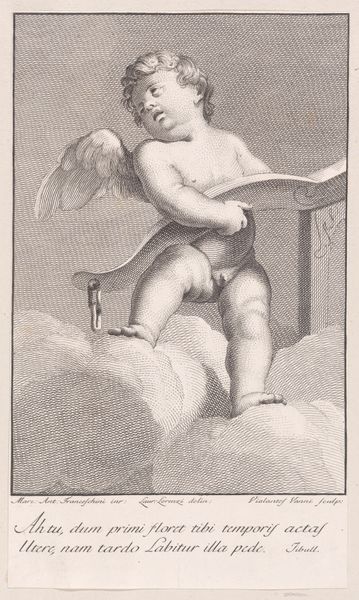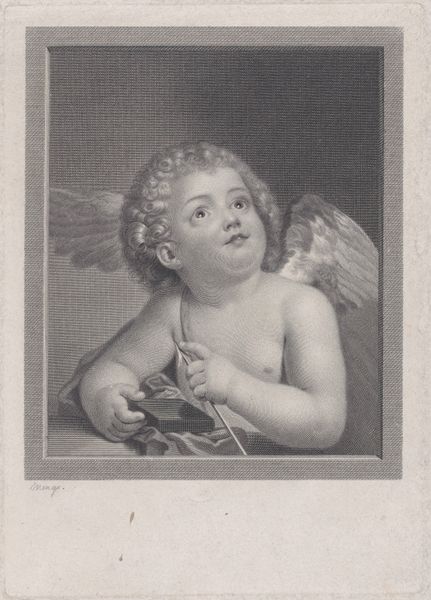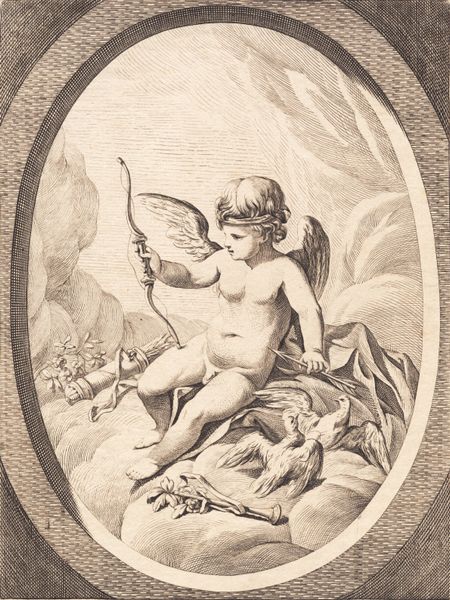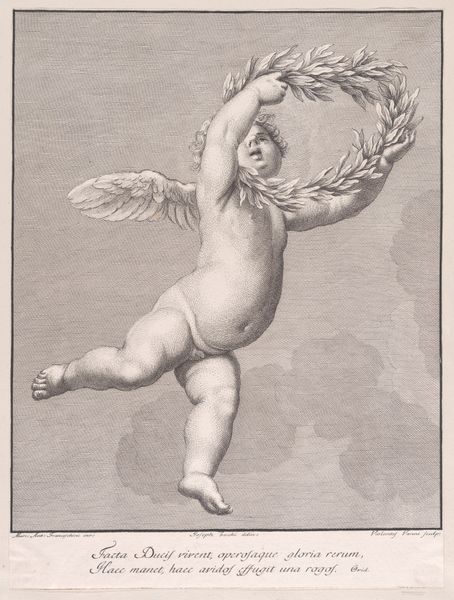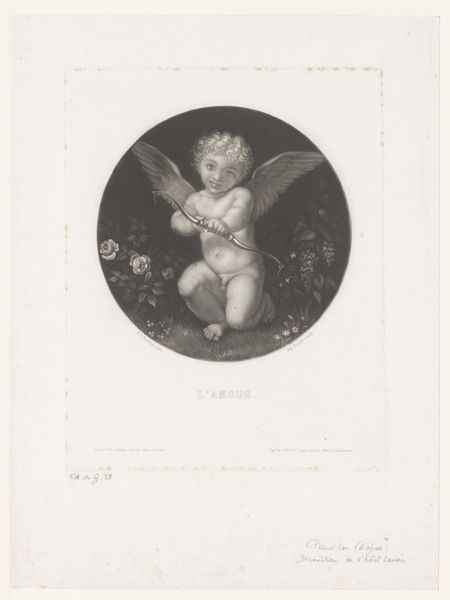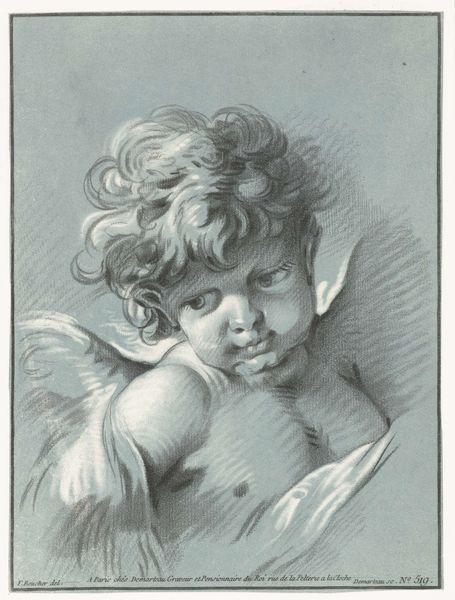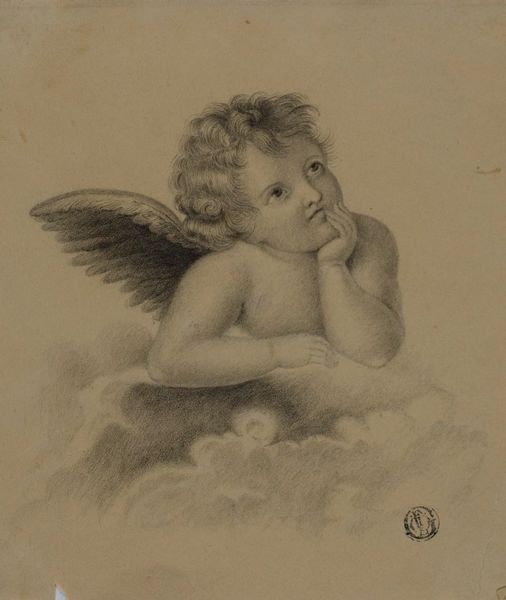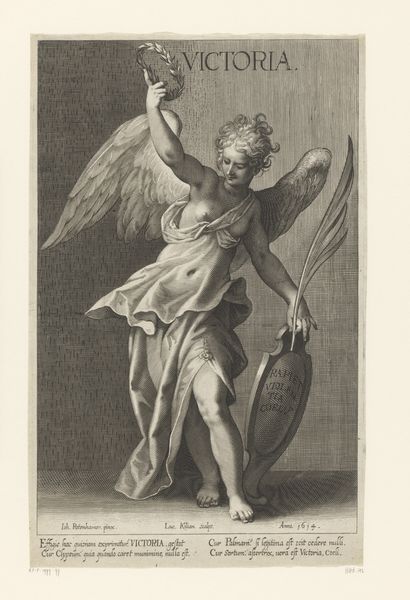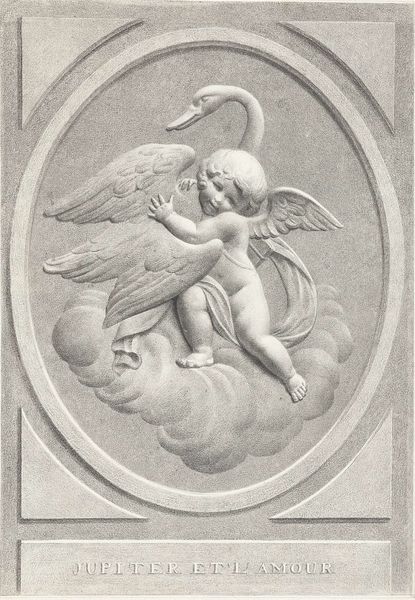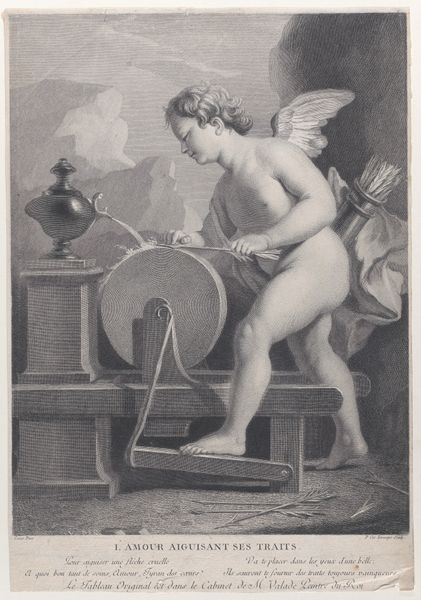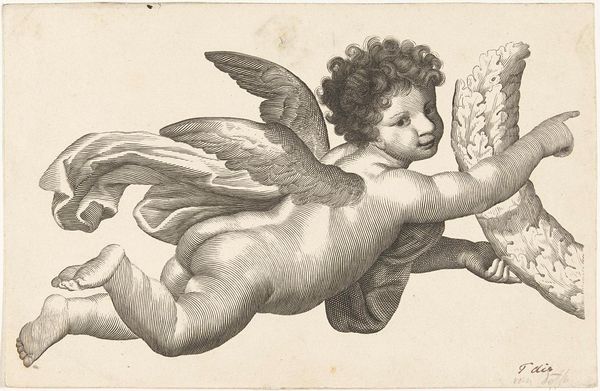
Fotoreproductie van detail van schilderij Madonna del Rosario door Sassoferrato in de Santa Sabina te Rome c. 1857 - 1875
0:00
0:00
jamesanderson
Rijksmuseum
Dimensions: height 257 mm, width 198 mm
Copyright: Rijks Museum: Open Domain
Editor: This is a photo reproduction – a gelatin silver print – by James Anderson, dating roughly from 1857 to 1875. It depicts a detail from Sassoferrato's painting "Madonna del Rosario." The cherubic figure has such a softness, but there's also something melancholic about his posture. What catches your eye? Curator: Oh, you're spot on! That tender melancholy is a potent part of its charm, isn’t it? For me, beyond the inherent beauty, it is the layers of reproduction that truly fascinate. Anderson, a 19th-century photographer, captured a detail of a Renaissance painting. It is not merely a document but an interpretation, filtered through his own artistic lens, then ours. A Russian Doll of artistry. Does that make sense? Editor: Absolutely. The layers of interpretation really change how we perceive the original artwork. Curator: It certainly does. Think about it, James Anderson would not have had the convenience of a digital camera and high-resolution print media at his disposal like we do today, to photograph a piece so well. One can almost imagine Anderson setting up his cumbersome equipment inside the Basilica di Santa Sabina, light levels would have played such a major role in its final appearance, the atmosphere almost palpable. Editor: It’s like we’re viewing the Renaissance through a Romantic lens, literally and figuratively! I'm struck by how this photo almost feels more intimate than viewing the full painting. Curator: Exactly! By focusing on a single cherub, Anderson isolates this feeling and intensifies it. I see not just devotion, but also perhaps the weight of responsibility, a very human sentiment assigned to a divine being. And this interpretation is largely due to Anderson’s choice of detail and medium. Editor: This conversation really adds a different depth and historical perspective to a piece that would've been simply a nice old-timey picture. Curator: Yes, thinking about those artistic choices and technological limitations unlocks such a richness. These reproductions aren't copies; they are conversations across time.
Comments
No comments
Be the first to comment and join the conversation on the ultimate creative platform.

